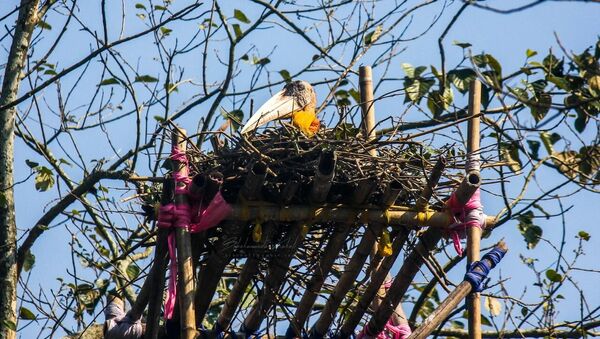New Delhi (Sputnik) — In what could be a landmark in the conservation efforts of the endangered greater adjutant storks, a pair has laid eggs on an artificial nest atop a high bamboo platform in India's northeastern state of Assam.
The scavenger birds, locally called "Hargila" were earlier scorned upon by locals who destroyed their habitats and poisoned them, as they believed the birds were a harbinger of bad luck. But after years of efforts by biologist Purnima Devi Barman and her "Hargila Army" of local women, the people are now gradually learning to coexist with the birds that play a major role in balancing the ecosystem.
This is the first successful effort to conserve the stork species, only 1,200 of which are left in the world.
"This is for the first time in the world that such an in-situ initiative involving an artificial platform for endangered bird Hargila has been undertaken, and the target species has started using it immediately after two months of construction," biologist Purnima Devi Barman, who is spearheading the conservation effort, told Sputnik.
"Nesting trees are limiting factors for this species. In the villages I am working; seven old nesting trees fell due to natural calamities. So, I immediately tried this experiment," Barman added.
Purnima Devi Barman says she is elated at the success and intends to carry forward the project in other areas.
"The idea was that in case if we are successful, we can replicate this in other areas where nesting trees are limiting factors. This needs time; so next year if we have enough support, we can do it in a holistic way to assist the population. Hargila is on the brink of extinction so it's high time for the government to support this species," Barman, said.





